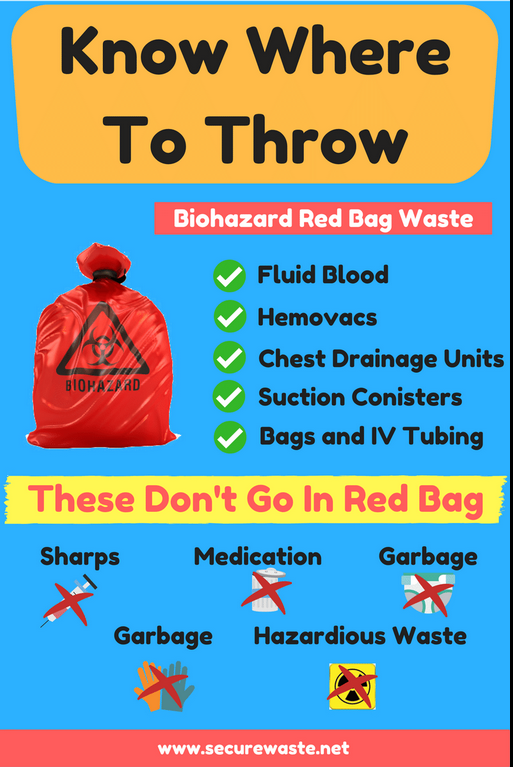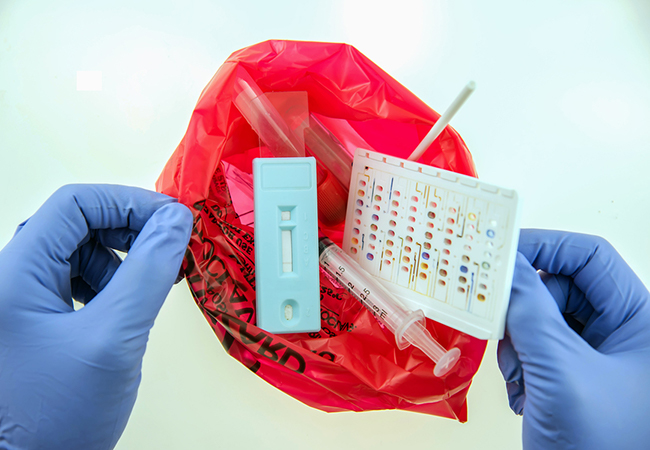Neighborhood Care: Seamless and Reliable Medical Waste Removal Near Me
Wiki Article
Keep Ahead of Regulations: Specialist Advice on Medical Waste Disposal
In a globe where the medical care market is continuously evolving, it is essential for medical centers to stay in advance of laws when it comes to the proper disposal of medical waste. From understanding the various classifications of medical waste to applying the right collection and segregation approaches, this discussion will certainly offer valuable insights and workable ideas to aid centers stay in advance of regulations in the ever-changing landscape of clinical waste disposal.Understanding Medical Waste Categories
Understanding medical waste groups is necessary for proper disposal and management in healthcare centers. Clinical waste refers to any kind of waste generated by healthcare tasks that may present a threat to public health and wellness or the environment. It is important to classify medical waste properly to ensure its risk-free handling, disposal, transport, and therapy.There are a number of groups of medical waste that health care facilities require to be aware of. The most typical groups consist of contagious waste, pathological waste, sharps waste, pharmaceutical waste, and chemical waste. Each group has particular guidelines and laws for its correct management and disposal.
Pathological waste refers to human cells, body organs, or body components that require unique handling and disposal. Drug waste consists of run out, extra, or polluted medications that need careful handling and disposal.
Staying Up-To-Date With Regulatory Changes
Staying present with regulative changes is crucial for health care facilities to make certain compliance and correct monitoring of medical waste disposal. medical waste removal near me. With guidelines regularly developing, it is vital for healthcare centers to remain current to prevent charges, penalties, and possible harm to the environment and public healthTo stay in advance of regulatory adjustments, health care facilities ought to develop a system for surveillance and tracking updates. This can be done by registering for governing newsletters, participating in workshops and conferences, and proactively getting involved in market organizations. Furthermore, facilities must designate a staff participant or team in charge of staying educated and distributing information to pertinent stakeholders.
Routine interaction with regulative firms is also important. Medical care facilities must develop connections with neighborhood, state, and federal firms to ensure they know any modifications in laws that may impact their waste administration techniques. This can be done through routine conferences, participation in public comment durations, and proactive interaction with regulative firms.
Additionally, healthcare centers should take into consideration partnering with waste management firms that focus on clinical waste disposal (medical waste disposal services with WasteX). These business are usually well-versed in the most recent guidelines and can provide assistance and assistance to make certain conformity
Implementing Proper Collection and Partition Approaches
To effectively manage medical waste disposal, health care facilities need to develop correct collection and partition approaches in conformity with governing guidelines. Implementing these methods guarantees the safe handling and disposal of potentially hazardous materials, safeguards the atmosphere, and reduces the risk of infections and injuries to healthcare employees and the public.
Appropriate collection and segregation methods involve making use of assigned containers and identifying systems. Health care facilities should provide plainly classified containers for various kinds of medical waste, such as sharps, infectious waste, pharmaceutical waste, and non-hazardous waste. These containers should be color-coded and plainly significant to prevent confusion and promote very easy recognition.
Furthermore, healthcare centers should educate their personnel on the appropriate treatments for gathering and segregating clinical waste. This consists of informing them on the different sorts of waste, the suitable containers to use, and the importance of adhering to guidelines and regulations. Normal training sessions and correspondence course must be conducted to make certain that personnel members stay up-to-date on best techniques.
Additionally, healthcare centers should develop a system for regular collection and disposal of clinical waste. This may entail partnering with certified waste monitoring business that concentrate on clinical garbage disposal. These business will certainly guarantee that the accumulated waste is delivered and taken care of in compliance with regulative requirements.
Selecting the Right Disposal Approaches

Incineration is just one of the most typical and efficient approaches for getting rid of particular kinds of clinical waste, such as pathological waste and sharps. It involves the controlled combustion of waste at heats, decreasing it to ash. Incineration can release dangerous toxins right into the air and contribute to air pollution.

Various other disposal methods consist of chemical treatment, microwave therapy, and landfilling. Chemical treatment entails the usage of chemicals to disinfect and counteract the waste. Microwave treatment makes use of microwave energy to warmth and disinfect official source the waste. Landfilling entails burying the waste in a marked garbage dump location (medical waste disposal services with WasteX). Nevertheless, landfilling must be the last hope due to the potential danger of contamination to dirt and groundwater.
Ensuring Compliance Through Documentation and Training
After carefully taking into consideration the appropriate disposal methods for medical waste, healthcare centers must ensure conformity with laws and minimize ecological influence by implementing reliable documents and training treatments. This action is the original source crucial in maintaining a lasting and risk-free environment for both health care employees and the public.
Medical care workers who deal with medical waste ought to get suitable training on waste segregation, managing, and disposal treatments. By giving thorough training, medical care centers can encourage their team to make enlightened choices and decrease the threat of visit this website inappropriate waste disposal.
Verdict
In verdict, remaining ahead of policies in medical waste disposal is important for health care facilities. medical waste removal services. Comprehending the different categories of clinical waste, remaining updated with regulatory changes, applying correct collection and segregation methods, selecting the appropriate disposal techniques, and making sure compliance via documents and training are all important steps. By adhering to these standards, healthcare companies can successfully handle and get rid of of medical waste in a secure and accountable mannerFrom recognizing the various classifications of clinical waste to carrying out the best collection and partition techniques, this conversation will offer valuable understandings and actionable pointers to assist facilities stay in advance of policies in the ever-changing landscape of clinical waste disposal. - medical waste disposal services with WasteX
The most usual categories include transmittable waste, pathological waste, sharps waste, pharmaceutical waste, and chemical waste. Medical care facilities ought to offer plainly identified containers for various kinds of medical waste, such as sharps, infectious waste, pharmaceutical waste, and non-hazardous waste. Health care facilities must develop a thorough system to record and track all aspects of medical waste disposal, including types of waste produced, quantities, and disposal techniques utilized. Health care workers who deal with medical waste ought to get suitable training on waste segregation, dealing with, and disposal procedures.
Report this wiki page